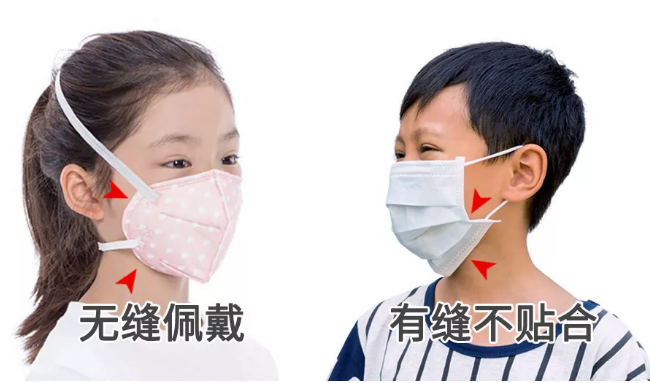Everyone should still be concerned about the flu epidemic before New Year’s Day. The situation of patients piling up in front of pediatric outpatient clinics and cold medicines out of stock everywhere is still vivid in my mind. It has just stopped a little, but recently there is news that the flu is back?

In fact, it is not the flu that has returned, but the flu that has not left.
Every year from November to March of the following year is the season of high incidence of influenza, and this time the influenza has not only not gone, but also has a more dangerous trend.
According to the weekly influenza surveillance report recently released by China’s National Influenza Center, in the 7th week of 2018 (late February), the proportion of influenza A (influenza a) has exceeded that of influenza B (influenza B).

Compared with influenza B, which can only be transmitted at close range, influenza a is more infectious, prone to mutation, cross-infectious between animals and humans, and more pathogenic.
The Spanish flu, which killed 50 million people worldwide in 1918, and the bird flu, which caused global panic in 2004, were both behind the scenes by H1N1.
The test report from the Influenza Center shows that the second flu accounted for the largest proportion of the influenza epidemic at the end of last year, and now the more dangerous influenza a is on the trend of overtaking the second flu.
Therefore, it is more worth raising the vigilance against influenza.
Severe influenza can kill children, and children are more dangerous.
For adults, the vast majority of people infected with influenza will not cause severe illness, and most of them will heal themselves in about 3-7 days, cough and the like can last for 1-2 weeks.
However, children’s resistance is weak. After infection with influenza, the possibility of complications such as pneumonia, myocarditis, encephalitis, laryngitis, acute otitis media, bronchitis, etc. is higher. Severe cases can develop into severe influenza and respiratory failure, which is also the primary cause of influenza death.
This is a set of data released by the U.S. Centers for Disease Control and Prevention (CDC) on February 26. In a seasonal flu that hit the United States in 2017, as many as 97 children died from the flu.

I once consulted a child with influenza. After only two days of fever and cough, the parents began to think it was a cold. Then they began to breathe shortness of breath. They were sent to the hospital for a check. The swine flu test was positive. The film showed pneumonia and dyspnea. They were sent to ICU. The ventilator could not reverse the disease and had to use ECMO (commonly known as artificial lung).

Prevention is the best treatment for flu.
Influenza virus is highly infectious and can spread rapidly through droplets spread into the air when sneezing or coughing, contact between people or contact with influenza virus contaminated articles.
Daily prevention of influenza starts from these three aspects:
Step 1 Wash hands frequently with running water
Wash your hands with flowing water after going to the toilet, before eating, or after going home.
2. Vaccination
The World Health Organization, the U.S. Centers for Disease Control and Prevention and the China Centers for Disease Control and Prevention all encourage children, the elderly, people with chronic diseases or immune disorders to be vaccinated in time before the influenza epidemic, which can reduce the morbidity and mortality of influenza.
Step 3 Wear a mask when you go out
Wearing a mask can effectively prevent droplets carrying influenza virus from entering the respiratory tract in the air. It is a simple, economical and effective anti-influenza measure worthy of vigorous promotion.
Even after being vaccinated, you still need to wear a mask, because the vaccine cannot cover all the currently prevalent viruses and their subtypes.
However, there are misunderstandings in the choice of masks. Not all masks can prevent influenza, especially in the choice of children’s masks. Unprofessional masks not only cannot effectively isolate influenza viruses, but may bring harm to children.
Pay attention to these 4 points when choosing children’s masks.
1. The filterability of children’s masks shall not be less than 95%
Influenza virus is transmitted through saliva or particles attached to the air. The diameter of particles in the air is very small (less than or equal to 2.5 microns). If the mask selected can only filter macromolecular particles, it cannot play an effective role in protecting influenza.
According to the opinion of < >, in order to prevent influenza virus, it is recommended to select masks with particle filtering efficiency of not less than 95%.
According to China’s GB2626-2006 < < Respiratory Protective Equipment-Self-priming Filtering Anti-particulate Respirator > > standard, KN95 mask represents a filtration efficiency of more than 95%, and KN95, N95 (American Standard) or FFP2 (European Standard) protective mask can be selected.
It should be noted that the airway diameter of children is smaller than that of adults, and the smaller the airway diameter, the greater the resistance to breathing. If the respiratory resistance after wearing masks is too large, the lung function of children will be affected.
However, there are also some masks that use electrostatic electret technology to filter particles through adsorption, thus improving the filtering effect and having less impact on children’s lung function.


2. The air tightness of the mask is good enough to effectively block influenza germs.
When choosing a mask for a child, it is necessary to choose a mask model that fits the child’s face as much as possible according to the size of the child’s face.
After wearing, there is no gap around, so as to achieve better air tightness and effectively prevent droplets carrying influenza virus from entering the respiratory tract through the gap.

3. Choose a more child-friendly style
The child’s ear bone is still developing. Compared with the ear-hung mask, the head-mounted mask will not increase the burden on the child’s ear and is more comfortable to wear.
Many children’s masks on the market also use metal nose clips in order to better reduce the gaps on both sides of the nose alar. However, metal nose clips have certain potential safety hazards for children, and non-metal materials can be selected, such as three-dimensional sponge nose pads, which are safer.
4. Children under the age of three are not recommended to wear masks.
Young people should try their best to reduce going out during the flu season.
Finally, I would like to remind everyone that influenza is rampant, but there is no need to panic too much. Timely vaccination, attention to details of life and minimizing access to densely populated places are effective ways to prevent influenza.
Masks are used as protective equipment. When buying masks, don’t patronize and choose fashionable and beautiful styles to follow the fashion. Only when you choose masks with qualified functions and produced by large brands can you be more reliable.
